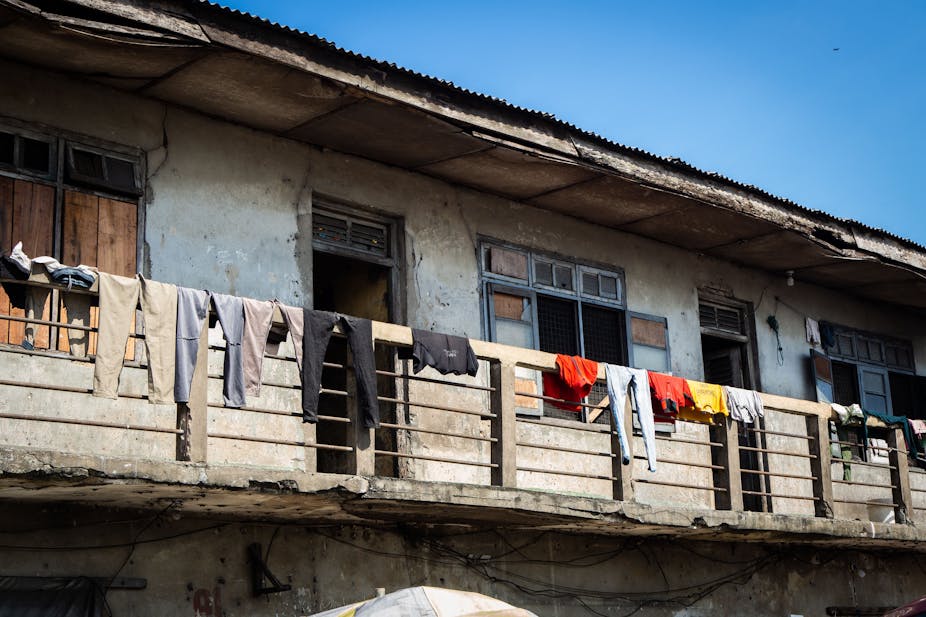Climate change is a long-term shift in temperatures and weather patterns. It’s caused by solar cycle variations and human activities such as burning fossil fuels: coal, oil and gas.
The impact of climate change is growing on the African continent. It’s hitting the most vulnerable hardest and contributing to food insecurity and population displacement. It’s also putting great stress on water resources.
In 2022, we saw devastating floods in Nigeria, South Africa, Benin, Madagascar and Central African Republic. The floods damaged livelihoods, critical infrastructure, education and economies.
The United Nations Intergovernmental Panel on Climate Change report has warned that unless governments everywhere reassess their energy policies, the world will become uninhabitable. Climate change is a grave and mounting threat to people and the planet. To plan for adapting to this threat, people need to understand what the risks will be.
Climate change adaptation is essential to prevent future infrastructure damage, provide economic opportunities and supply various social and environmental benefits. A critical question is whether African governments are doing enough to support citizens in combating climate change effects.
Our recently published article explored factors influencing residents’ adaptation to climate risks in Port Harcourt, southern Nigeria. Port Harcourt is the fourth largest city in Nigeria. We found that households’ choice of adaptation strategies were greatly influenced by education level, monthly income, house type and house ownership.
We concluded that the government and others like NGOs and private organisations must complement residents’ efforts. There’s also a need for an awareness campaign to make households less vulnerable to climate change risks.
Nigerian households and climate risks
We randomly selected and interviewed 310 households in low, medium, and high-income areas of Port Harcourt from October 2021 to February 2022. We targeted those susceptible to climate change. These included the elderly, women and residents of coastal communities. Port Harcourt is one of African coastal cities predicted to experience coastal flooding and erosion because of rising sea levels.
Awareness of climate risk was high
We found out that 88% of respondents believed that climate change had affected them negatively. These residents were very conscious of climate change impacts, because of the frequent severe flooding in the city.
Poor households are at greater risk
Our findings revealed that flooding was the most devastating and severe climate impact in Port Harcourt. It had significant impacts on critical infrastructure. When asked what they could do to adapt to flood risk in the city, respondents mentioned relocation of residents from risk areas, and repair and replacement of damaged properties.
Their choice of adaptation strategies was greatly influenced by the lack of government support and their income level. Low-income people are attracted to flood-prone areas by cheap housing and access to jobs.
Our data show that households experiencing higher flood risk paid 14% to 56% lower rents in Port Harcourt compared to other communities. And households affected by flooding lived closer to jobs. Low income earners who had been affected by flooding at least once lived 13 minutes closer to work than those who had not been affected. Those who had been affected more than once lived over 25 minutes closer to work than those unaffected by floods.
Homeowners invest more in climate protection measures
Individuals who owned houses had more adaptation strategies – 32% more than those living in rented apartments. Some of the strategies adopted by the homeowners included use of windbreaks, drainage construction in front of their houses, and planting of trees to protect them from sun and wind. The respondents confirmed that they did these things to protect themselves from a threatening event or vulnerability.
Older adults could turn the tide
Our results showed that older adults (55 to 65 years) represented 49% of the people who adopted various adaptation strategies to climate risk in the study area. Asked about their reasons for using these strategies, respondents in all age groups said that older adults had greater resources and represented an engaged and energised group of climate activists who were “rolling up their sleeves” to deal with the climate crisis in their communities.
They added that older adults brought life lessons, skills, experience, wisdom, time, and often economic wealth to address the climate crisis.
The way forward
From our findings, poverty is closely linked to higher climate risk in Port Harcourt, Nigeria. Poverty drives vulnerability to climate risk in different ways, from increased risk of exposure to extreme events such as floods and storms to lower access to coping mechanisms that can support resilience.
Consequently, government and civil society organisations should find ways to help residents learn about and use climate change adaptation techniques. This includes building construction in line with the national building codes, protection and restoration of wetlands and tree planting.
State governments and the federal government, development partners, and private sector actors all have a part to play. Their roles include investing in infrastructure, planning effective land use, creating wealth from waste, campaigning to change behaviour and reclaiming green spaces.
Citizens can act too. For example they can build climate-resilient buildings, take up home insurance, warn or help neighbours at risk, and use plants to improve drainage and create a more comfortable environment.

